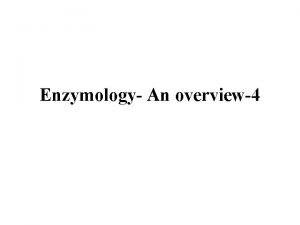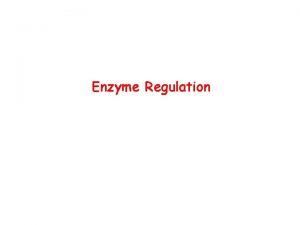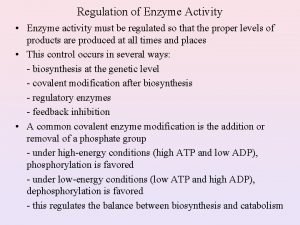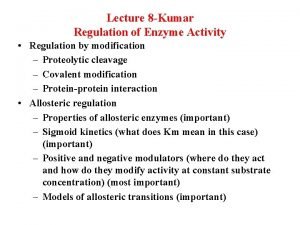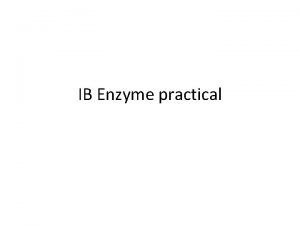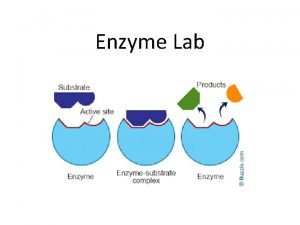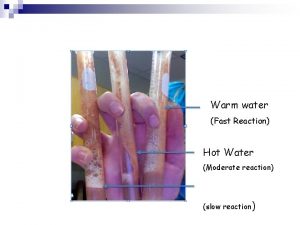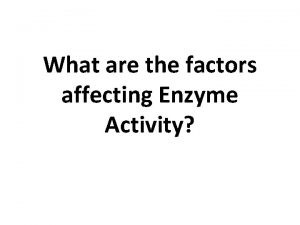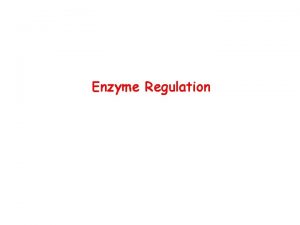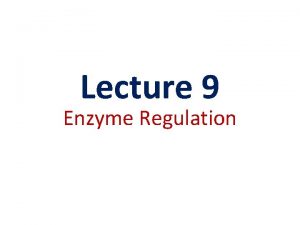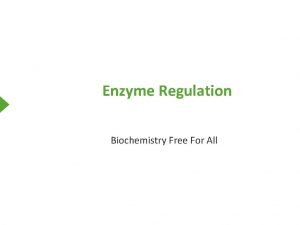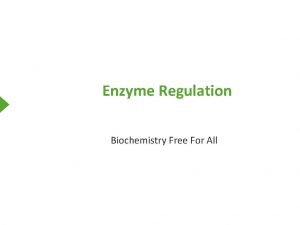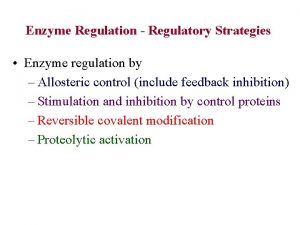Enzyme Regulation Environmental Control of Enzyme Activity As










- Slides: 10

Enzyme Regulation

Environmental Control of Enzyme Activity • As proteins, the tertiary structure of an enzyme is sensitive to. – p. H – [salts] – Temperature • Each enzyme has specific environmental conditions in which its efficiency is optimized.

Environmental Control of Enzyme Activity • Enzymes will denature if the p. H, temperature, or [salt] is not correct. • Denaturation: loss of the 3 D conformation of the protein (it unravels) causing a loss of the functioning of the active site.

Syllabus Statement 2. 4. A 2 Denaturation of proteins by heat or by deviation of p. H from the optimum. Define denaturation. Outline the effect of heat and p. H on protein structure.


Enzymes have a p. H optimum. Too acidic or too basic will denature the protein. However the optimum is not the same for each enzyme.

Substrate Concentration • Assuming that the amount of enzyme is constant, an increase in substrate concentration causes a diminishing increase in the reaction rate. • A maximum rate is obtained at a certain substrate concentration where all enzymes are occupied by substrate. The reaction rate cannot increase further. Rate of reaction Effect on Enzyme Activity With ample enzyme and cofactors present Substrate concentration

Enzyme Concentration and Enzyme Activity • An increase in enzyme concentration causes an increase in the reaction rate. • Reaction rate will eventually level off as all available substrates are used up.

Syllabus Statement 2. 5. U 3 Temperature, p. H, and substrate concentration affect the rate of activity on enzymes. Explain how temperature affects the rate of enzyme activity. Draw a graph of depicting the effect of temperature on the rate of enzyme activity. Explain how p. H affects the rate of enzyme activity. Draw a graph of depicting the effect of p. H on the rate of enzyme activity. Identify the optimum temperature of p. H for enzyme activity on a graph. Explain how substrate concentration affects the rate of enzyme activity. Draw a graph of depicting the effect of substrate concentration on the rate of enzyme activity.

Syllabus Statement 2. 5. U 4 Enzymes are denatured. State the effect of denaturation on enzyme structure and function.
 Enzyme regulation
Enzyme regulation Covalent modification
Covalent modification Thiamin
Thiamin Allosteric activator graph
Allosteric activator graph Wa department of water and environmental regulation
Wa department of water and environmental regulation Factors affecting enzyme activity temperature
Factors affecting enzyme activity temperature Enzyme cut-outs activity answer key
Enzyme cut-outs activity answer key Enzyme cut-outs activity
Enzyme cut-outs activity Enzyme station activity answer key
Enzyme station activity answer key Interpreting enzyme graphs
Interpreting enzyme graphs Enzyme activity
Enzyme activity
